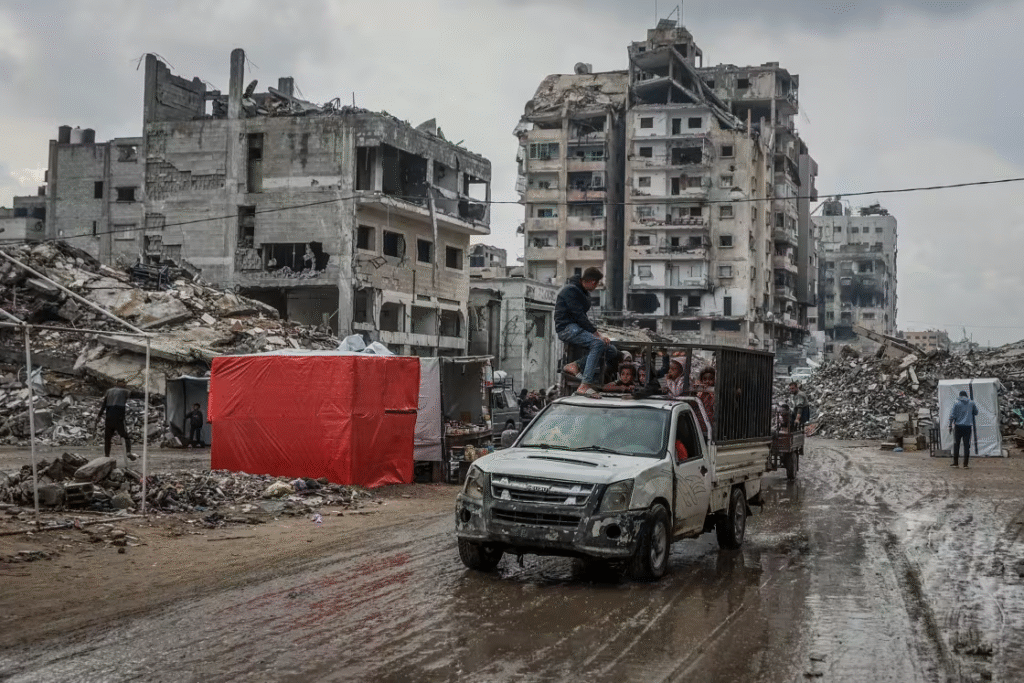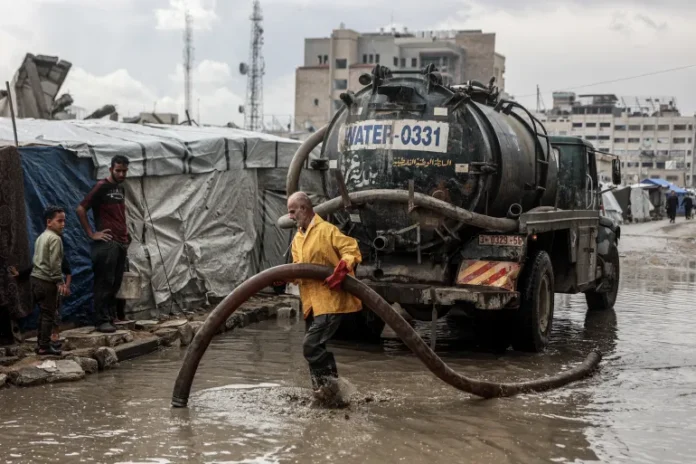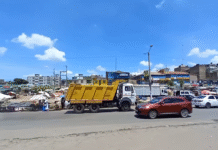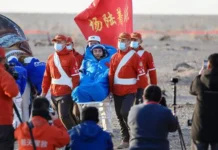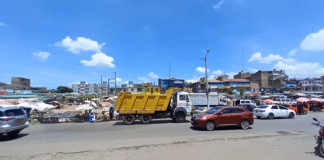Torrential rains lashed Gaza’s sprawling displacement camps on Saturday, transforming dirt paths into rivers and flooding tents where freezing families huddled.
With 90 per cent of the strip’s 2 million residents displaced, the first winter storms have intensified a humanitarian emergency already crippled by two years of conflict.
In Gaza City, Sana Abu Harad, 38, wept as she pointed to her shivering child amid sodden bedding. “Everything is underwater,” she told reporters. “Why must this little child sleep in floodwater?” Like thousands, she fought to secure a tent only for it to offer no protection.
Collapsed water and sewage systems, destroyed by Israeli strikes, have left hundreds of thousands without toilets or drainage. Civil Defence spokesman Mahmoud Basal warned of an “environmental disaster” as rainwater mixed with sewage, predicting health catastrophes.
The United Nations migration agency IOM said last month that 1.5 million people urgently need emergency shelter. Israel has blocked over 100 relief requests, including blankets and sanitation materials, according to the UN. Israel’s COGAT insists hundreds of aid trucks enter daily.
Political tensions complicate relief efforts. The UN Security Council votes Monday on a US proposal for an international stabilization force in Gaza, facing opposition from Russia, China and Arab states. In Israel, far-right ministers Itamar Ben-Gvir and Bezalel Smotrich demanded Prime Minister Benjamin Netanyahu reject any pathway to Palestinian statehood referenced in a joint statement.
Netanyahu, reliant on ultranationalist support, reaffirmed Israel’s opposition to a Palestinian state. Negotiations on ceasefire phases, Hamas disarmament and hostage returns remain stalled over international force deployment.
As storms rage, residents like Ma’in Albuhteiti, 50, sheltering seven children in a Gaza City tent, face sleepless nights. Woken at 3am by sweeping rain, they embody Gaza’s desperate plea for infrastructure repair and unrestricted aid.
